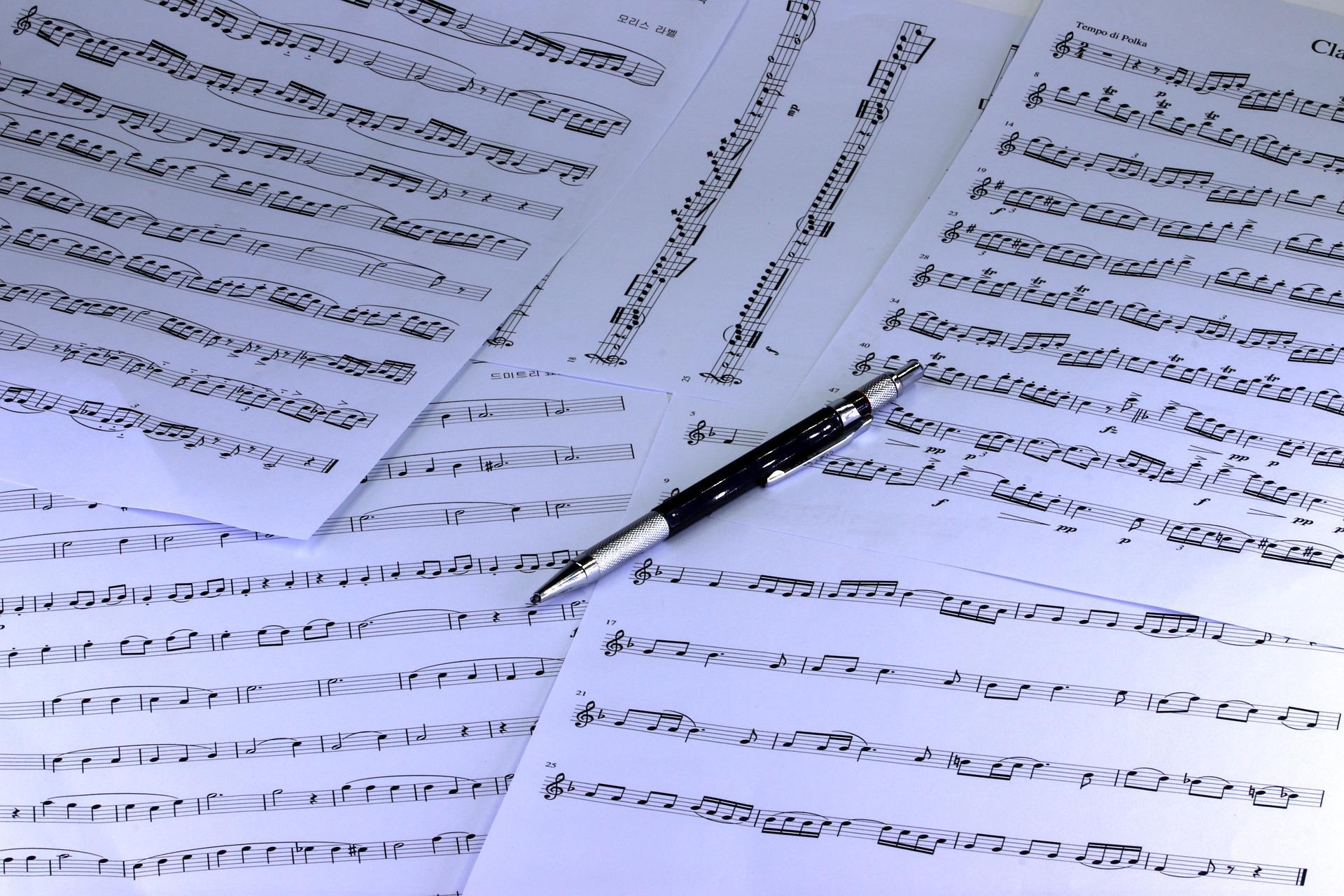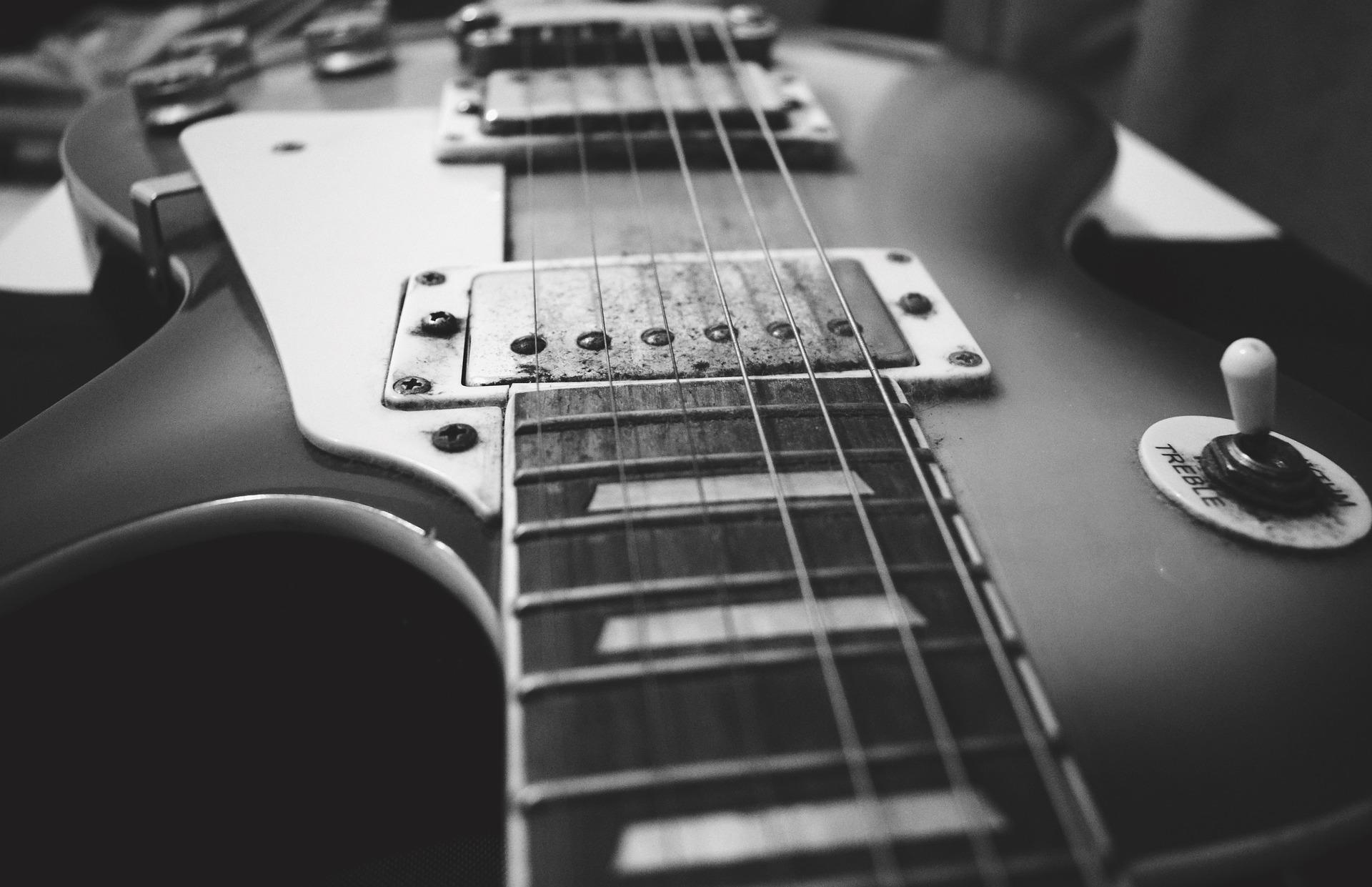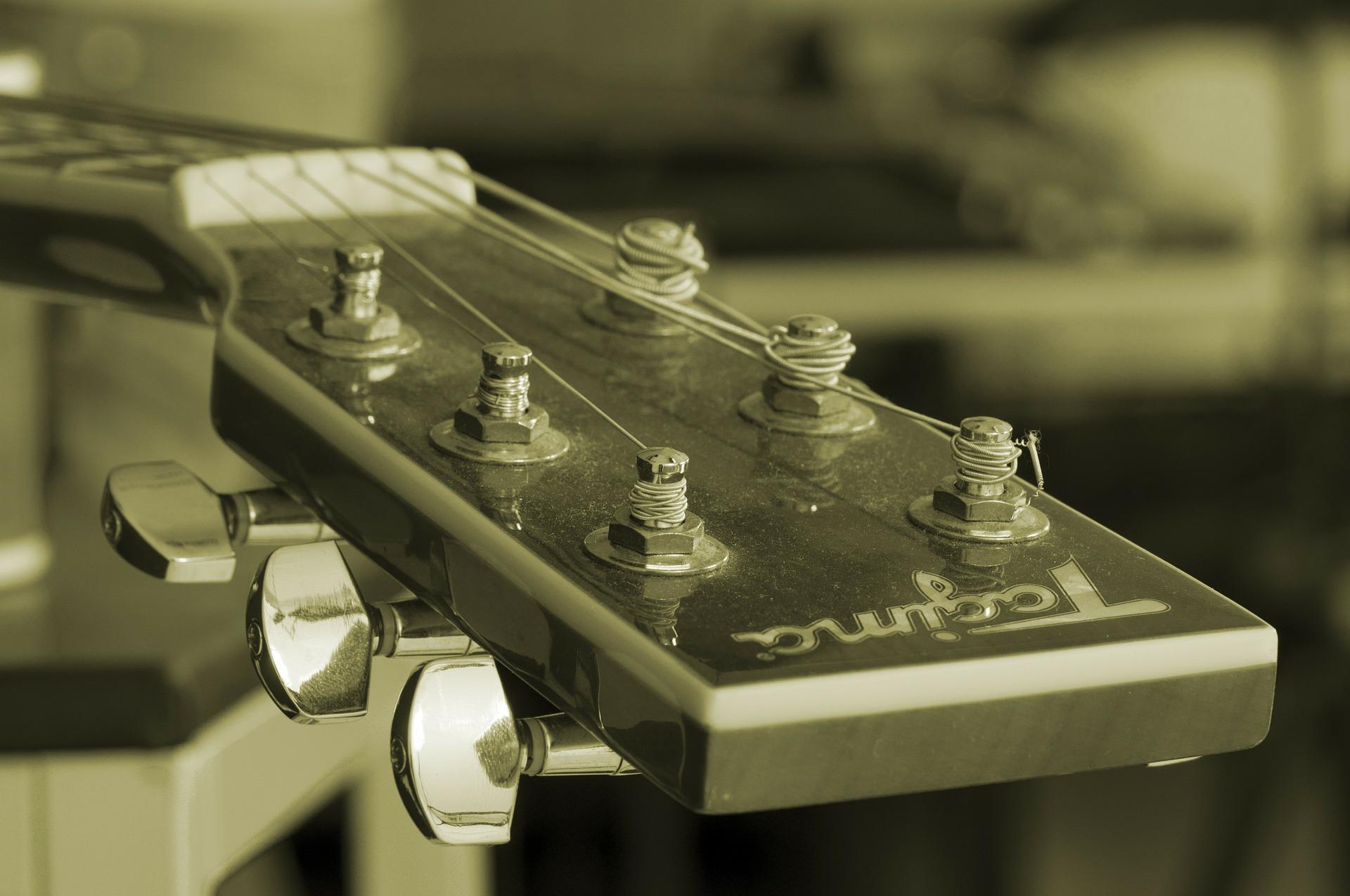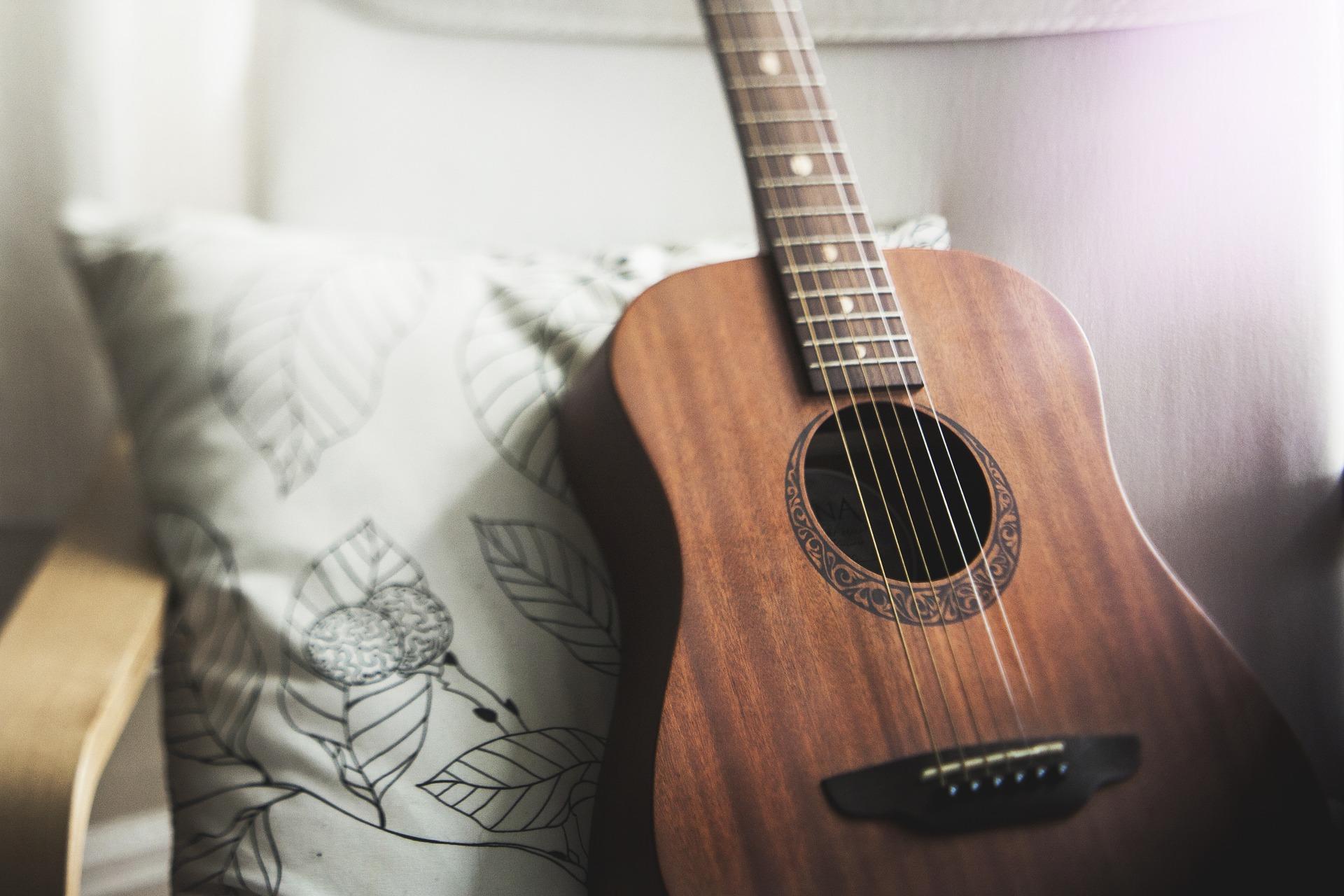“Sometimes the nicest thing to do with a guitar is just look at it.” - Thom Yorke
What Are Guitar Scales?
Guitar scales are sequences of musical notes played in a specific order and pattern. They are fundamental tools for guitarists and musicians in general. Scales are used to create melodies, improvise, understand music theory, and develop dexterity and familiarity with the guitar fretboard.
However, just listening to music won’t help you learn how to play the guitar. When it comes to learning how to play guitar, you can’t just look at it or listen to it, you’ll need to learn about pentatonic scales, harmonic scales, major scales, chromatic scales, etc. As a guitarist, you should learn your way around the fretboard, study scales, chord progressions, music theory, and improvise.

Guitar Scales Chart
e|----------------|----------------|----------------|----------------|
B|----------------|----------------|----------------|----------------|
G|----------------|----------------|----------------|----------------|
D|----------------|----------------|----------------|----------------|
A|-------3--5--7-|----------------|----------------|----------------|
E|----------------|-------3--5--7-|----------------|----------------|
In this representation:
- The letters on the left (e, B, G, D, A, E) represent the strings of the guitar from high E (thinnest string) to low E (thickest string).
- The numbers indicate the frets you should press down on each string to play the C Major scale in this position.
- An "x" or "o" might be used to represent whether a string should be played (x) or avoided (o) in a particular scale.
How Many Scales Are There On Guitar?
The number of scales that can be played on the guitar is virtually limitless, as scales are fundamental building blocks of music and can be created by altering the pitch or intervals between notes in countless ways. However, in practical terms, there are several commonly used scales that guitarists often learn and practice. Some of the most common scales for guitarists include:
Major Scale
The major scale is the foundation for many other scales and modes. It has a bright, happy sound.
Minor Scale
The minor scale comes in various forms, including the natural minor, harmonic minor, and melodic minor scales. These scales have a more somber or exotic quality.
Pentatonic Scale
The pentatonic scale is a five-note scale widely used in rock, blues, and various other genres.
Blues Scale
The blues scale is a variation of the pentatonic scale and is essential for playing blues music.
Dorian Mode
Dorian is one of the modes of the major scale and has a unique, slightly jazzy sound.
Mixolydian Mode
Mixolydian is another major scale mode, often used in rock and blues.
Phrygian Mode
Phrygian is a minor scale mode with a distinctive, exotic flavor.
Aeolian Mode
The Aeolian mode is the natural minor scale and is frequently used in various musical styles.
Locrian Mode
Locrian is a rare and somewhat dissonant mode used less frequently in modern music.
Harmonic Minor Scale
The harmonic minor scale is commonly used in classical and jazz music.
Melodic Minor Scale
The melodic minor scale is used in jazz and fusion genres.
Whole-Tone Scale
The whole-tone scale consists of whole steps only and has a dreamy, ethereal quality.
Diminished Scale
The diminished scale is used in jazz, fusion, and metal music for its unique, tense sound.
Hungarian Minor Scale
The Hungarian minor scale has a distinctive, exotic sound and is used in various musical contexts.
The Major Scale on the Guitar
The major scale is the most common for musicians and non-musicians to be familiar with.

Ask anyone to recite musical notes and they’ll probably tell you something like: Do, re, mi, fa, sol, la, ti, do. This is known as Solfège. This is the major scale and it's a scale that every guitar player should learn.
In C, these notes are all the white keys on a piano. This is the first scale that most musicians will learn because all scales are variations on this one. The others come from either altering notes or adding or removing a semitone. Understanding how the major scale works is essential for learning how to play the guitar and learning other scales on the guitar.
Learn About Solfège
Solfege, also known as solfeggio or solfège, is a music education method that uses syllables to represent the musical notes of the diatonic scale. It is commonly used to teach pitch and sight-singing to students, especially in vocal training and early music education. Solfege provides a way to learn and internalize the relationship between musical notes and their corresponding syllables, making it easier to read and sing music.
The most common solfege syllables are:
- Do (or Ut): Represents the first note of the major scale, which is typically the tonic or starting note of a musical piece.
- Re: The second note of the major scale.
- Mi: The third note of the major scale.
- Fa: The fourth note of the major scale.
- Sol: The fifth note of the major scale.
- La: The sixth note of the major scale.
- Ti: The seventh note of the major scale.
- Do (or Ut): The octave, which is the same as the first note but in a higher register.
Structure of the Major Scale
The major scale is heptatonic because it has seven notes between the first note (the tonic) and the last note (the fundamental).

Each note is no more than a full tone apart (be it a tone or a semitone). You just have to remember what the intervals between each note are:
- I to II: A tone.
- II to III: A tone.
- III to IV: A semitone.
- IV to V: A tone.
- V to VI: A tone.
- VI to VII: A tone.
- VII to I: A semitone.
As you’ll see on a piano, there’s only a semitone between E and F and B and C. On the guitar, each fret is a semitone apart so you’ll usually have to go up two frets between notes. There are two ways to remember a scale. Either in terms of tones or in terms of frets:
- 1T - 1T - 0.5T - 1T - 1T - 1T - 0.5
- 2 - 2 - 1 - 2 - 2 - 2 - 1
The second of these two methods is the intervals in the scale in terms of frets. By remembering the structure and the intervals, you don’t need to worry about the key. You can start from any note and play the entire major scale. Of course, some scales require you to add or remove semitones. It’s a major scale because there are two full tones between the tonic and the third. You can also break down the scale as follows:
- Major Second
- Major Third
- Perfect Fourth
- Perfect Fifth
- Major Sixth
- Major Seventh
What Are the Notes of the Major Scale on the Guitar?
In a guitar lesson or tutorial, you’ll probably learn the diatonic scale with a guitar chord and the blues scale in the mixolydian mode. We generally learn the minor scales after we’ve learned the major scales as they’re generally more important.

Whether you’re learning on a jazz guitar, acoustic guitar, or electric guitar, you can use these scales on the neck of any guitar. To help you transpose any major scale, here are the different notes that are used in each scale:
- C D E F G A B C
- G A B C D E F# G
- D E F# G A B C# D
- A B C# D E F# G# A
- E F# G# A B C# D# E
- B C# D# E F# G# A# B
- F G A Bb C D E F
- Db Eb F Gb Ab Bb C Db
- Ab Bb C Db Eb F G Ab
- Eb F G Ab Bb C D Eb
- Bb C D Eb F G A B
- F# G# A# B C# D# E# F#
- C# D# E# F# G# A# B# C#
- G# A# B# C# D# E# F# G#
- D# E# F# G A B C# D#
- A# B# C# D# E# F# G# A#
- Gb Ab Bb Cb Db Eb F Gb
How Do You Play the Major Scale on the Guitar?
To play the major scale on the guitar, just like any guitar scale, you need to start from a given note.

Let’s start with the C major scale. The C is the third fret on the second lowest string (A string) on your guitar (in terms of pitch). The major scale can be played by moving along two frets, two frets, one fret, two frets, two frets, two frets, one fret. Knowing the major scale and how to transpose it is an essential part of learning how to play the guitar. It’ll also help you understand the intervals in different types of chords and learn how to improvise and compose more effectively. Here’s some advice before you start working on the major scales:
- Start off slowly and don’t skip any of the steps.
- As you’ve seen, the major scale has seven notes. Don’t try and learn them all in one go! Focus on a single position and work on it until it’s second nature before you start trying the next position. Slowly add each position as you master them.
- It’s recommended that you use a plectrum and play using a back-and-forth motion. If you’re not comfortable with using a plectrum, it might be a good idea to start practising now.
- Use a metronome to help you keep time.
Sign up for your first online guitar lesson today with Superprof.
How to Read a Scale Diagram
It’s recommended that you learn how to read scale diagrams if you want to learn how to play your scales.
- The horizontal lines represent the strings of the guitar and the lowest is the low E string, just like on a guitar tab.
- The vertical bars represent the frets and the first space indicates an open string.
- The numbers below the lines indicate the frets (as it's not always obvious).
- The darkest notes indicate the tonic, the first note in the scale.
- Each letter corresponds to the note being played.
A scale diagram can be played in several different ways. To start, you should play the scale from the lowest notes to the highest notes. For the first position of the major scale, here’s how to place your fingers.
- Low E string: index finger on the 8th fret, middle finger on the 10th fret, pinky on the 12th fret.
- A string: index finger on the 8th fret, middle finger on the 10th fret, pinky on the 12th fret.
- D string: index finger on the 9th fret, middle finger on the 10th fret, pinky on the 12th fret.
- G string: index finger on the 9th fret, middle finger on the 10th fret, pinky on the 12th fret.
- B string: index finger on the 10th fret, ring finger on the 12th fret, pinky on the 13th fret.
- High E string: index finger on the 10th fret, middle finger on the 12th fret.
Which Fingers Should I Use?
On all major scales, you play three notes on each string. You’ll, therefore, need to use three fingers on each string. There are three different positions.
- Two frets between the first two notes two frets between the second and third notes.
- Two frets between the first two notes and a single fret between the second and third notes.
- A single fret between the first two notes and two frets between the second and third notes.
You’ll need to learn three different fingerings.
- 2 frets/2 frets: With two larger gaps, there are two possibilities:
- Your index finger on the first note, your middle finger on the second, and your pinky on the third.
- Your index finger on the first note, your ring finger on the second note, and your pinky on the third.
- You need to decide which solution is the most comfortable.
- 2 frets/1 fret: Use your index finger for the first note, your ring finger for the second note, and your pinky for the third note.
- 1 fret/2 frets: Use your index finger for the first note, your middle finger for the second note, and your pinky for the third note.
Make sure you stay focused: keep your fingers pressed down when you’ve played the second and third notes of the string. Do not take them off until you’ve played the first note on the next string. This technique should only be used when working from the low notes to the high notes.
Check out the best way to learn Guitar through a private guitar lesson on Superprof.
Going Even Further
Don’t forget to progressively work on memorizing each position of the major scale and not just make it up as you go along. Regular practice is the best way to improve your guitar playing, learn more about the melodic aspects of licks and riffs, and play guitar solos.
Remember that when you learn to play a guitar scale, you can make things easier by focusing on the intervals between each note and going up and down the scale. Scales can also help a beginner come up with a chord progression, write guitar licks, play a solo, create melodies, and improvisation. Whether you play blues guitar, rock guitar, or classical guitar, you need to learn each interval, and guitar scale, and get practicing either with beginner guitar lessons or online guitar lessons. There are plenty of free guitar resources online to get you started, too!
















